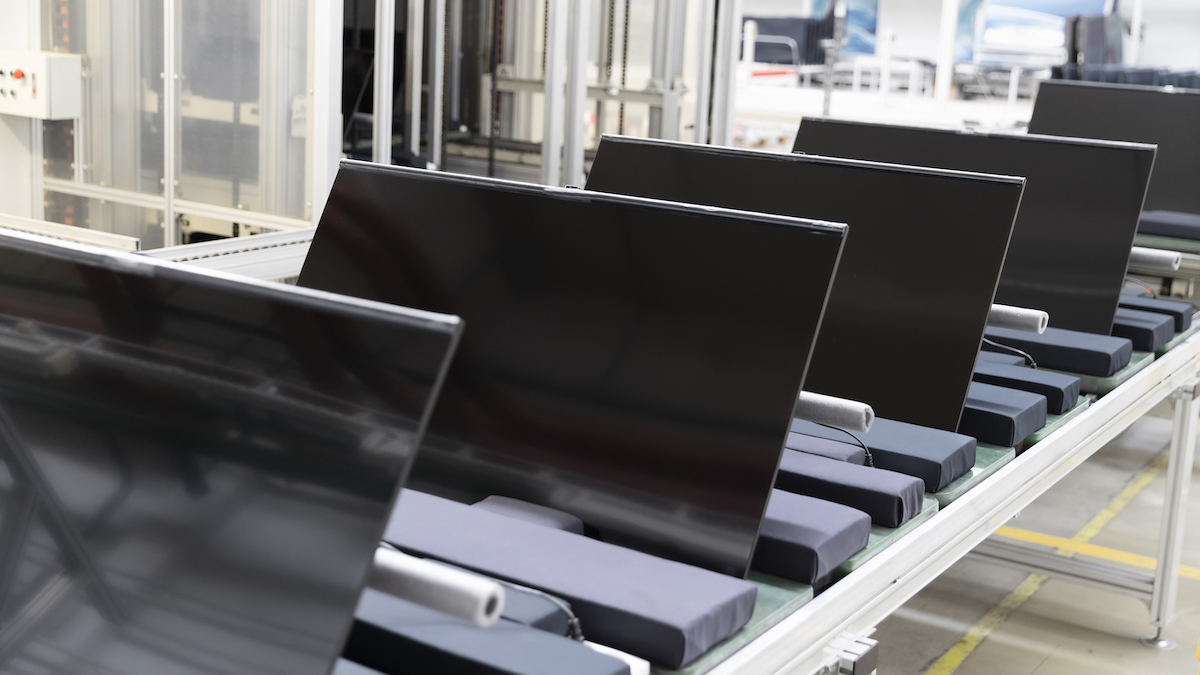
LCD Flat Panel Production Starting To Make Shift From China To India: DSCC Prediction
January 3, 2024 by Dave Haynes
The display-focused research and consulting firm DSCC has an interesting (albeit nerdy) set of predictions up about what might happen in the next 12 months with the LCD, OLED and LED display businesses.
I won’t go through them all, as you can read yourself (I think you might have to register). But here are two quick takeaways – microLED’s expected use in wearables is starting to happen, and India is the next big display-producing country.
Analyst Bob O’Brien notes that while microLED has had a LOT of buzz about its great promise as a display technology, that hasn’t really played out – at least not yet – in terms of affordable products for business or consumers. There are microLED and microLED-ish video walls, but you need to own a hedge fund or be a striker for Manchester City to afford one.
Now there is word that the Swiss luxury watch maker “TAG Heuer will introduce a new smartwatch with a 1.39” Round shaped MicroLED display. The display will utilize an LTPS backplane and 15µm x 30µm RGB LED chips. The display will have 454×454 resolution, although with the round shape these figures refer to the axes, and the display will have fewer than the 200K pixels for a square display (162K, by my calculation). We estimate that the price of the display will exceed $300.”
Based on the higher cost of the display compared to its existing product line with OLED displays, we expect the new watch with a MicroLED display to at least sit in the mid-range of TAG Heuer’s portfolio, with a list price of at least $3000.
A less expensive option for MicroLED may be available in 2024 as well. US-based Garmin, well known for its navigation devices, sells smartwatches for as little as $139 for a child-size watch, with a product range that goes up to $1199 for a luxury series. The Garmin watch may have similar specifications, but likely a lower price for the display as Garmin is not likely to stretch too far from its current maximum price.
Small displays such as required for watch faces gets around a big manufacturing challenge for microLED. Video walls need millions of light pixels produced and placed with absolutely minimal dead or flawed ones, which is hard and very expensive. Smaller displays don’t present the same challenge, and in the case of luxury timepieces, buyers are already conditioned to spending big money on little items.
Regarding India … while there has been much discussion about India as building up flat panel display manufacturing capacity, it is only now starting to happen at some scale:
Compared to the situation in 2017, the environment for flat panel display production in India is dramatically more favorable today, for the following reasons:
- The Indian government has announced a major subsidy program for semiconductors and flat panel displays. The central government will subsidize 50% of the investment in approved FPD capacity, and as much as 20% subsidy may be available from state and local governments.
- Geopolitical relations between the US and China, and between India and China, have deteriorated substantially. The US has initiated what amounts to a trade war with China, imposing both import and export barriers.
- China has come to dominate the FPD industry, especially in LCD. In 2016, China represented only 30% of worldwide LCD capacity, but by 2025 China will have 74% of LCD capacity.
- While economic growth in China has slowed, India has the fastest growing economy in the 2020s.
- While the population of China has peaked and is falling, India’s young population continues to grow, and it is now the world’s most populous country.
- The domestic TV market in India is the third largest country market in the world, after China and the US, but unlike China and the US the Indian market is continuing to grow. We estimate the India TV market was 22M in 2023 and will grow to 30M in 2030 with additional growth thereafter. China’s TV market peaked in 2018 at 59M units.
Whereas the US has historically (at least until 2017) been open to free trade and imports, India has historically had a much more closed market, with higher tariffs and non-tariff barriers. There are currently no barriers to importing flat panel displays into India, but it is easy to imagine India banning the import of LCD TV panels from China. India has already banned TikTok and more than 58 other Chinese-created apps from its smartphone market.
If India would ban LCD imports from China, it could create a distinct FPD market isolated from the worldwide display industry, and isolated from the Crystal Cycle of shortage and oversupply. Panel prices would likely be higher in India, allowing FPD makers there to ramp production more profitably than if they had to match worldwide prices.
Unlike most countries, India has an economy and a market large enough to support a substantial display industry. We estimate the end-market demand for display products across all applications in India to be 13.9M square meters in 2023, able to fill more than three fabs the size of Vedanta’s plans. Furthermore, while we expect worldwide FPD demand to grow slowly, we expect FPD demand in India to grow at a double-digit % throughout our forecast horizon.
This line is particularly interesting, with respect to how predictions by guys like Chris Riegel of STRATACACHE came true, about China taking over from South Korea for flat panels. In 2016, China represented only 30% of worldwide LCD capacity, but by 2025 China will have 74% of LCD capacity.




Leave a comment